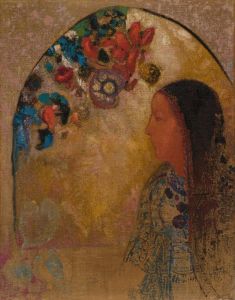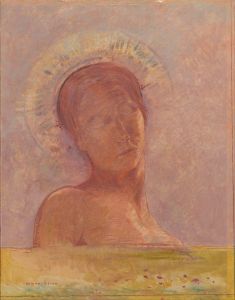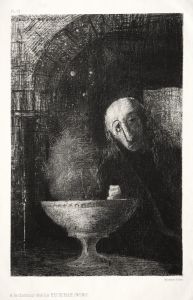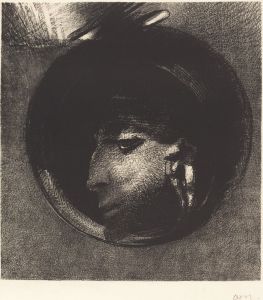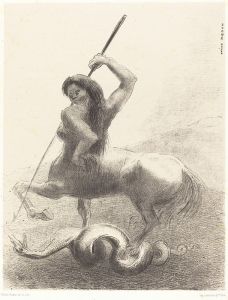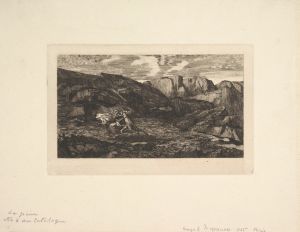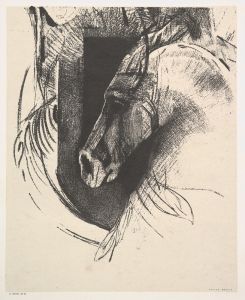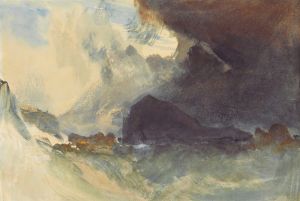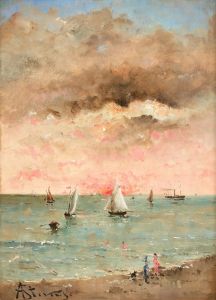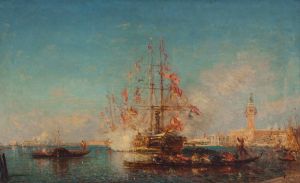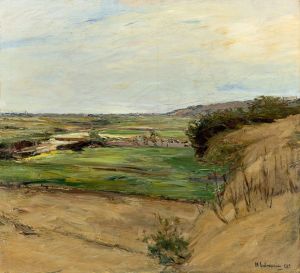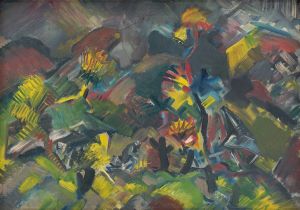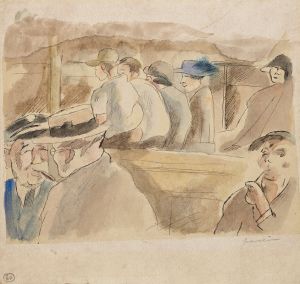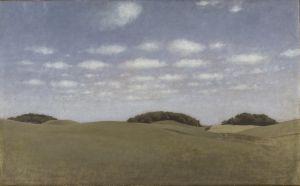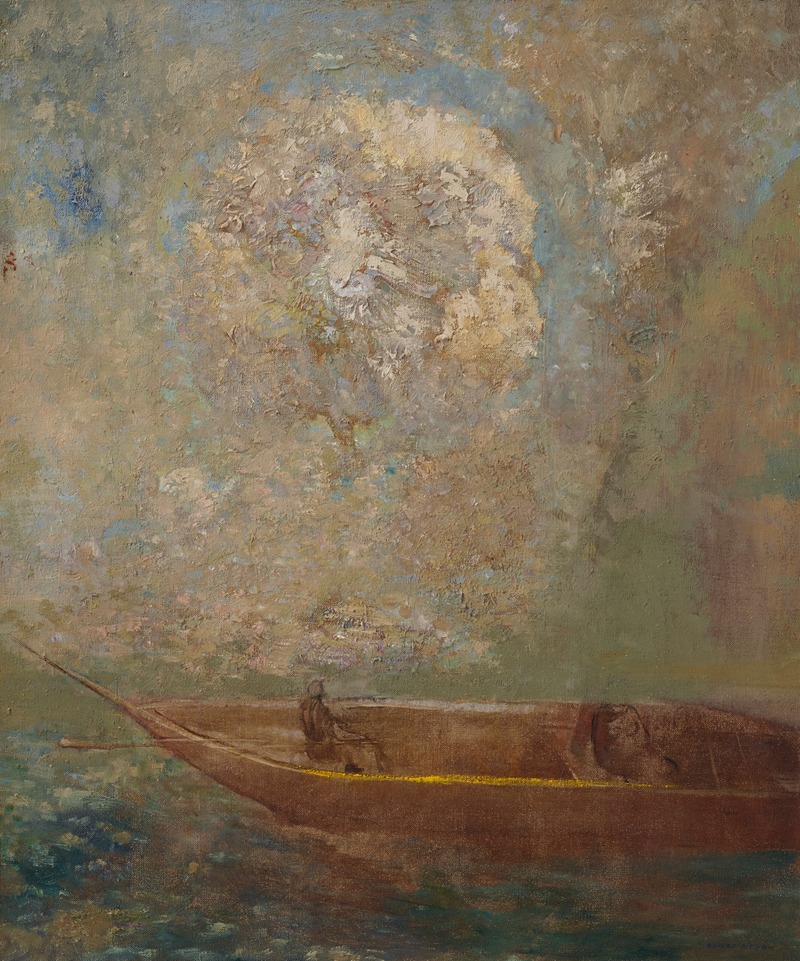
La Barque
A hand-painted replica of Odilon Redon’s masterpiece La Barque, meticulously crafted by professional artists to capture the true essence of the original. Each piece is created with museum-quality canvas and rare mineral pigments, carefully painted by experienced artists with delicate brushstrokes and rich, layered colors to perfectly recreate the texture of the original artwork. Unlike machine-printed reproductions, this hand-painted version brings the painting to life, infused with the artist’s emotions and skill in every stroke. Whether for personal collection or home decoration, it instantly elevates the artistic atmosphere of any space.
Odilon Redon, a prominent French symbolist painter, created "La Barque" during a period when his work was transitioning from the dark, monochromatic charcoal drawings and lithographs known as "noirs" to more colorful and vibrant paintings. Redon, born in 1840 in Bordeaux, France, was known for his unique ability to blend reality with fantasy, often exploring themes of dreams, spirituality, and the subconscious.
"La Barque," which translates to "The Boat" in English, is one of Redon's works that exemplifies his fascination with dreamlike imagery and the use of color to evoke emotion. While specific details about the creation date and the exact circumstances surrounding "La Barque" are not extensively documented, it is consistent with Redon's later style, which embraced vivid colors and more abstract forms.
Redon's work often drew inspiration from literature, music, and his own introspective nature. He was influenced by the symbolist movement, which sought to express the ineffable and the mystical through art. This movement was a reaction against the naturalism and realism that dominated the art world in the late 19th century. Instead of depicting the world as it is, symbolists like Redon aimed to depict the world as it could be imagined, filled with mystery and emotion.
In "La Barque," Redon likely employs his characteristic use of color and form to create a scene that is open to interpretation. His paintings from this period often feature ethereal landscapes, fantastical creatures, and dreamlike scenarios. The use of a boat as a subject could symbolize a journey, transition, or exploration, common themes in Redon's oeuvre. Boats in art often represent the passage from one state of being to another, a fitting metaphor for Redon's interest in the spiritual and the unknown.
Redon's technique involved layering pastels and oils to achieve a luminous quality, allowing colors to blend and interact in ways that create a sense of depth and movement. This approach is evident in many of his works from the early 20th century, where he moved away from the stark contrasts of his earlier "noirs" to embrace a more harmonious and colorful palette.
Throughout his career, Redon maintained a close relationship with other artists and intellectuals of his time, including the composer Claude Debussy and the writer Stéphane Mallarmé. These interactions further enriched his work, as he often sought to translate the emotional and symbolic content of music and poetry into visual form.
"La Barque," like many of Redon's works, invites viewers to engage with it on a personal level, allowing their own experiences and emotions to inform their interpretation of the piece. This open-ended quality is a hallmark of Redon's art, which continues to captivate audiences with its beauty and mystery.
Odilon Redon passed away in 1916, but his legacy endures through his contributions to the symbolist movement and his influence on later artists who sought to explore the boundaries of imagination and reality. His work, including "La Barque," remains a testament to his vision of art as a means of exploring the unseen and the unknown.





